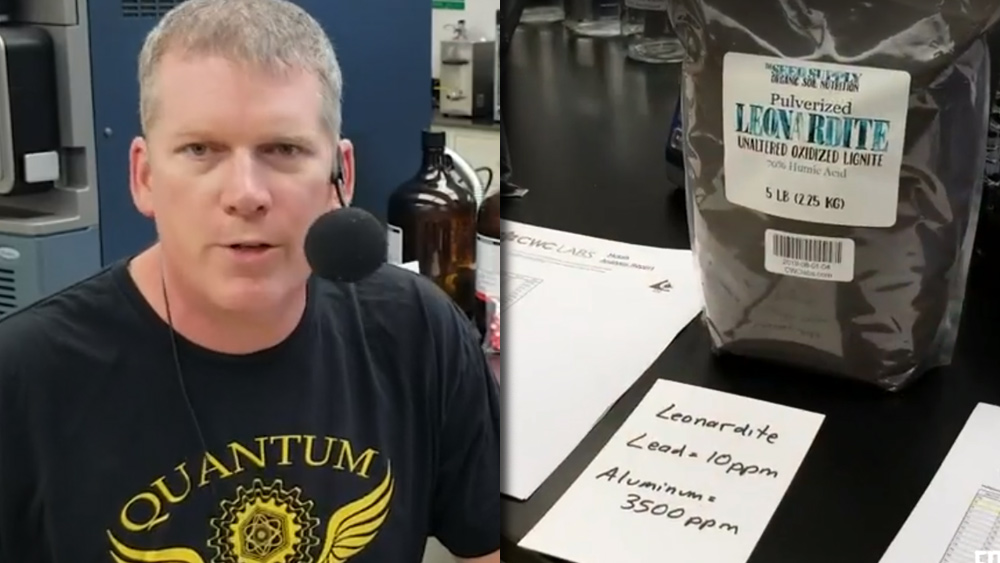Researchers develop new coating for textile fibers that can protect against toxic industrial chemicals
09/01/2019 / By Edsel Cook

Industrial workers and soldiers alike are often exposed to deadly chemicals in the workplace. Now, they might breathe in relief thanks to a new metal-organic framework. When applied to the fibers of various textiles, the coating will catch and trap deadly chemicals, keeping the toxic substances from ever reaching the wearer.
The metal-organic framework promises to capture both industrial chemicals and chemical weapon agents in various environments. It may even work in highly humid environments that hamper the effectiveness of conventional filters.
Refined versions of the coating may make their way into a new generation of masks and personal protective equipment. Industrial workers will enjoy safer working conditions while soldiers will get better protection against enemy chemical attacks.
North Carolina State University (NC State) researchers and their military counterparts at the Combat Capabilities Development Command Chemical Biological Center (CCDC) trialed the capabilities of their new coating. After applying it to different textiles, they exposed the coated materials to a chemical that replicated the painful effects of a blistering agent.
The researchers also tested the coating’s ability to neutralize ammonia gas. Toxic enough on its own, ammonia is also a key ingredient in making explosives and chemical weapon agents, as well as more peaceful industrial uses. (Related: Exchanging one poison for another: It’s costing the military millions to clean up chemicals from toxic firefighting foam, but the new formula isn’t any safer.)
A new material that effectively absorbs and neutralizes toxic chemicals in humid conditions
They reported that textiles coated with the metal-organic framework negated the blistering agent in environments with 80 percent relative humidity. The coating also succeeded in capturing ammonia.
“For more than a century, we’ve had threats from chemical warfare agents, from chlorine and mustard gas in World War I to recent attacks against civilians in Syria,” explained NC State researcher Dennis T. Lee, the primary author of the study. “We need to find ways to capture and chemically break down toxic gases for practical, better-performing protective equipment.”
For their study, Lee and his colleagues chose metal-organic frameworks. By coating microfibers with different materials, they gave the fibers new properties.
They developed coatings with the ability to trap hazardous chemicals in a thin film through the process of adsorption/absorption. But their work faced two problems.
First, the metal-organic framework had to maintain its stability in conditions with high levels of moisture. If water destabilized the coating, any chemical trapped by the material would break free.
Second, the coating also needed to break down the toxic chemicals into less harmful substances.
New metal-organic framework forms unique crystals and resists flaking
The researchers came up with a metal-organic framework that used copper as its basis. Their coating maintained its stability even after getting exposed to large amounts of water.
Powdered metal provided the raw material for most coatings. The team broke from that trend by applying a solid film on the polypropylene fiber.
Testing showed that the solid film coating absorbed three times more ammonia gas than the powder-based counterpart.
To see what they got right, the researchers scanned their coating with an electron microscope. They found that the metal-organic framework created a crystal lattice that fanned out from the fiber in a radial manner that earlier counterparts never displayed.
Further, the copper-based material formed a strong bond with the polypropylene fiber that it covered. It resisted getting separated from the fiber.
“This alignment formed a dense coating on the fibers, with better integration and adhesion to the surface, and improved adsorptive performance for hazardous gases,” explained Lee.
The researchers will test the new materials against actual chemical warfare agents. If successful, composite materials with metal-organic framework coatings might serve as base films in Mission Oriented Protective Posture (MOPP) suits and their civilian counterparts.
Sources include:
Tagged Under: breakthrough, chemical warfare, chemical weapons, chemistry, detox, future science, future tech, industrial chemicals, innovation, metal-organic framework, microfibers, military, nanotechnology, new materials, soldiers, textiles, toxic chemicals
RECENT NEWS & ARTICLES
COPYRIGHT © 2017 DETOX NEWS



















